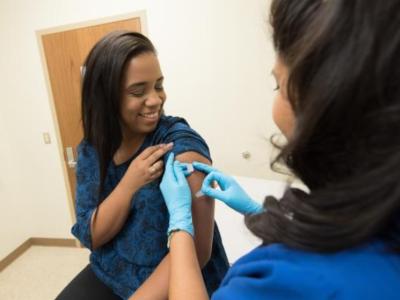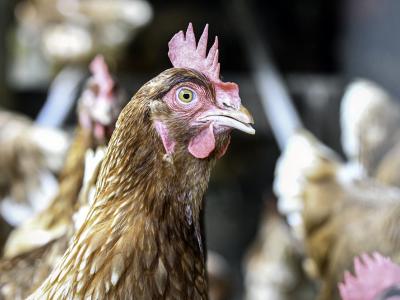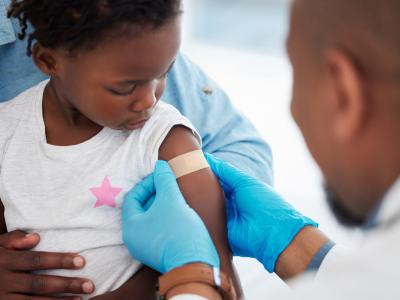H7N9 infects Jiangxi province woman
China's Jiangxi province on May 1 announced a new H7N9 avian influenza case, involving a 39-year old woman from Jiujiang who is hospitalized in critical condition, according to a provincial health department statement translated and posted by FluTrackers, an infectious disease news message board.
Jiangxi province is in southeastern China and borders other provinces that have reported several cases since the virus first emerged in 2013. The province reported its most recent previous case in late February.
The woman's illness is the first H7N9 case to be reported in May and boosts the global total from the disease to 659, according to a running case list kept by FluTrackers.
May 1 FluTrackers thread
FluTrackers H7N9 case list
In related news, the number of H7N9 cases in China has slowed considerably since the first of the year, and Ian Mackay, PhD, a virologist at the University of Queensland in Australia, wrote on his Virology Down Under (VDU) blog today that the third outbreak of H7N9 appears to be over. He based his conclusion on an epidemiologic curve containing available information.
Mackay noted that recent cases haven't been as many as in previous years, but the timing of disease activity with the November start was similar, and the link to poultry exposure was as strong as ever. Though most of the cases in the third wave were reported in Guangdong, Fujian, and Zhejiang provinces, three additional regions reported their first H7N9 cases: Xinjiang Uyghur Autonomous Region in the far western part of China, plus Guizhou and Hubei provinces.
The first H7N9 wave occurred in the spring of 2013, and the second from the fall of 2013 to the spring of 2014.
Mackay noted that three provinces that reported third-wave cases—Xinjiang, Guangxi, and Jilin—share borders with other countries. He said it's unclear, however, how many asymptomatic or mild infections are occurring, how many illnesses are occurring without lab testing, and if the data are complete.
May 4 VDU post
Epi comparison: H7N9 a greater pandemic threat than H5N1
The potential pandemic risk may be greater for H7N9 avian flu than its H5N1 counterpart, according to a side-by-side analysis of the epidemiology of sporadic cases and clusters caused by the diseases, an international research team led by the Chinese Center for Disease Control and Prevention reported today.
They based their findings on an analysis of 720 H5N1 cases and 460 H7N9 cases reported through Nov 2, 2014, with goals of estimating the relative risk in blood-related contacts and the reproduction number and of assessing whether surveillance biases may be occurring.
The investigators found that secondary H7N9 cases occurring in clusters involve younger patients compared with sporadic and index cases. Cluster infections are also less severe, which the team said shows a case ascertainment bias, with sporadic cases being detected through routine surveillance or by a healthcare system that's biased toward older and more severe cases.
The team added that a large number of mild cases in younger people are probably not being detected, a finding suggested by a handful of serologic studies.
For H5N1, the group didn't find a similar case-ascertainment bias for H5N1, which they said suggests H5N1 cases represent all cases and that most H5N1 infectious are probably severe. However, they found that H5N1 clusters are more common than H7N9 clusters, which might be due to several reasons, with the most likely one being that greater H5N1 case clustering indicates familial susceptibility.
"This hypothesis is supported by our finding of an increased relative risk of secondary infection in blood relatives of H5N1 index cases, which was not found in blood relatives of H7N9 cases," the investigators wrote. They added that a more powerful analysis of familial relative risk could be conducted if better and more complete data were available, especially the number of close contacts and their relationships to the index cases.
The team concluded that the risk profiles for the two viruses are quite different, with H5N1 causing severe disease but perhaps with restricted susceptibility, possibly based on genetics and other biological barriers, and H7N9 possibly fueling many undetected mild cases that may hint at greater human susceptibility.
Also, the greater population susceptibility and higher number of cases with H7N9 increase the opportunities for adaptive evolution, they wrote.
May 4 Clin Infect Dis abstract
Serologic study finds H6 exposure in China's poultry workers
A serologic study today of poultry and wild-bird workers in 22 Chinese provinces found that 63 of 15,689 samples were positive for exposure to the H6 avian flu virus, a level much higher than seen for H5N1 avian influenza but lower than low-pathogenic H9N2.
Only one H6 infection has been reported in a human, an H6N1 illness in a 20-year-old woman from Taiwan in 2013. Her infection was picked up during heightened testing for H7N9. She had pneumonia but recovered.
Researchers from China's health ministry and the China Animal Health and Epidemiology Center in Quingdao based their analysis on serum samples collected from 2009 through 2011 in workers in live-poultry markets, backyard poultry farmers, commercial poultry farmers, slaughterhouse workers, and employees of wild bird habitats. They published their findings in Emerging Infectious Diseases. For testing, they used an H6N2 virus collected from Guangdong province.
Seropositivity varied by occupation and was highest in live-poultry-market workers, backyard farmers, and workers in wild bird habitats. No children showed evidence of infection, and seropositivity didn't vary by gender or other age-group. For comparison, only two serum specimens were positive for H5N1, but 3.4% of samples were positive for H9N2.
Positive samples were detected in all 11 of the southern provinces, but only 3 of the northern ones: Henan, Liaoning, and Jilin.
Researchers concluded that the H6 virus has been broadly circulating in Chinese birds and that exposure to live-poultry markets is the major risk factor for human infections. They added that H6 surveillance should be strengthened for pandemic preparedness.
May 4 Emerg Infect Dis study
Jun 21, 2013, CIDRAP News story "Taiwan reports first human H6N1 infection"










